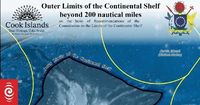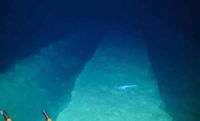More than five decades after the world’s first deep-sea mining test, the scars of that experiment remain etched into the ocean’s memory, serving as a cautionary tale as the United States gears up for a new era of seabed extraction. The renewed push, driven by national security concerns and the global race for critical minerals, is colliding headlong with the lessons of the past and the fierce opposition of communities whose lives are entwined with the sea.
In July 1970, amid the anxious churn of the Cold War, Deepsea Ventures, a private corporation, conducted the world’s first deep-sea mining test on the Blake Plateau, some 300 kilometers off the US East Coast. According to historical accounts, the test dredged up about 60,000 nuggets of valuable minerals—cobalt, nickel, and manganese—from a 43-kilometer stretch of seabed. The event, as reported by multiple sources, marked the beginning of a decades-long fascination with the ocean floor as a potential source of strategic resources. But even now, as BBC and other outlets have noted, the environmental damage inflicted by that 1970 experiment is still visible.
The story doesn’t end there. In 1979, another mining machine crept along the Pacific seabed in the Clarion-Clipperton Zone (CCZ), a vast region between Hawaii and Mexico spanning about 4.5 million square kilometers. The CCZ, now central to global discussions on deep-sea mining, sits at depths of 4,000 to 5,500 meters—places where time seems to move at a glacial pace. A recent study led by the Natural History Museum and the National Oceanography Centre found that, as of October 2025, the tracks from that 1979 mining test remain startlingly intact. An eight-meter-wide strip carved by the collector machine “looks like it could have been made yesterday,” the researchers observed, highlighting how slowly deep-sea environments can recover from even small-scale disturbances.
While some signs of biological bounce-back have emerged—abundant xenophyophores, for instance, have recolonized parts of the disturbed tracks—full recovery remains a distant hope. Larger, more fragile organisms such as corals and sponges are still notably scarce, underscoring the long-term impacts of even a single test. According to Nature, “tiny creatures take years—if not decades—to return, and the physical damage remains long after the machines are gone.”
Fast-forward to April 2025, and the United States is once again at the center of the deep-sea mining debate. President Donald Trump signed an executive order to restart the nation’s deep-sea mining drive, framing the move as a matter of national security and economic independence. The administration’s rhetoric echoes the bipartisan consensus that has emerged in Washington: the need to secure reliable supplies of critical minerals, independent of foreign—especially Chinese—control. As Columbia University’s Adam Tooze has pointed out, this strategy of excluding China from key technology supply chains is now “effectively bipartisan policy.”
The stakes are high. Minerals such as cobalt, nickel, and manganese are vital for manufacturing semiconductors, batteries, and clean energy technologies. The US government, following the logic of the CHIPS Act and other recent initiatives, sees deep-sea mining as a way to ensure American dominance in these sectors. But the push to “unleash” deep-sea mining has not been met with universal enthusiasm—especially not in the places where the extraction would actually occur.
Nowhere is the tension more palpable than in American Samoa, a US territory in the South Pacific. In April 2025, California-based Impossible Metals applied for a commercial mining lease in an 18 million-acre area off the coast of American Samoa. The company, touting itself as a model of social responsibility, promises “seabed harvesting without destroying the habitat” and pledges that “planet comes first: environment and people before profit.” Yet, as The Guardian and other media have reported, local residents and leaders remain deeply skeptical of such claims.
Since making its application, Impossible Metals has tried to win over the people of American Samoa, presenting at public meetings and offering to share 1% of its profits with the islands. But the response has been overwhelmingly negative. The US Bureau of Ocean Energy Management’s call for public comments on the company’s proposal attracted a flood of opposition, including a substantial petition. The territory’s political leadership is united in rejecting deep-sea mining: in 2024, then-Governor Lemanu Mauga enacted a moratorium on seabed extraction in American Samoan waters, and in January 2025, Governor Pulaali’i Nikolao Pula reiterated this stance in a joint statement with other key leaders.
The reasons for opposition are as varied as they are urgent. The American Samoa Resilience Office, in its submission on Impossible Metals’ application, warned that the local tuna industry—employing 5,000 people out of a total population of less than 50,000—“could be severely impacted by sediment plumes, toxins and habitat disruptions.” The risks are not just economic. As one local submitter wrote, “the ocean isn’t just a resource or commodity; it is our relative, an integral part of our culture, our provider, and our home… To threaten its health is to threaten who we are as Pasefika people.”
Yet, for all the passion and unity in American Samoa’s opposition, their influence over Washington’s final decision remains uncertain. As historian Daniel Immerwahr has documented, American Samoa and other US territories exist in an “implicitly colonial relationship” with the mainland. American Samoans cannot vote in presidential or congressional elections, and their representative in the House lacks voting rights on legislation. Impossible Metals’ application must now pass a government environmental impact assessment, but if the federal government is determined to proceed, local objections may carry little weight.
Meanwhile, scientific research continues to cast doubt on the wisdom of large-scale deep-sea mining. The recent study of the 1979 CCZ test found little evidence of lasting sediment plume impacts on animal populations at that site, but researchers caution that scaling up from a small test to commercial operations covering tens of thousands of square kilometers is fraught with uncertainty. They urge “rigorous baseline studies, transparent monitoring, and enforceable safeguards before full-scale deep-sea mining begins.” As Phys.org reported, “when ecosystems may take decades to recover, the margin for error is razor-thin.”
In the end, the debate over deep-sea mining is a microcosm of larger questions facing the world: how to balance the urgent demand for minerals with the equally urgent need to protect fragile ecosystems and respect the voices of those most affected. The seabed may be out of sight, but as history and science remind us, it should never be out of mind.






